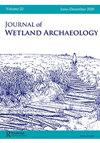Subneolithic Fishery in the Iijoki River Estuary, Northern Ostrobothnia, Finland
Q1 Arts and Humanities
引用次数: 10
Abstract
Abstract A wetland site discovered accidentally in the western part of the Kierikki area in Yli-Ii, Northern Ostrobothnia, Finland, surprised archaeologists in the mid 1990s by its size and the rare degree of preservation of the organic finds. A number of wooden objects had already been found during the draining of the present-day peatland agricultural field in the 1950s, but the age and the full scientific value of the prehistoric fishery were only recognized later. Since none of the wooden structures were intact, it has been challenging to reconstruct the Stone Age fishing methods in detail, but most of the finds point to ethnographically recognisable fish weir with lath screen traps set in shallow water. All of the radiocarbon samples returned Middle Subneolithic (nonagricultural Neolithic) dates ranging between 3934–2679 cal BC (2σ), but the relative dendrochronological dates indicate a distinct activity phase of only 19 years. The site is still in the process of being destroyed due to the progressive lowering of the water table. After a few decades, or a century at the most, a significant portion of the wooden artefacts of Purkajasuo will have deteriorated.芬兰奥斯博滕尼亚北部伊约基河河口的亚新石器时代渔业
20世纪90年代中期,在芬兰北部osterrobothnia Yli-Ii Kierikki地区西部偶然发现的一个湿地遗址,其规模和有机发现的罕见保存程度令考古学家感到惊讶。20世纪50年代,在现在的泥炭地农田排水期间,已经发现了一些木制物品,但史前渔业的年龄和全部科学价值直到后来才得到承认。由于没有一个木结构是完整的,详细重建石器时代的捕鱼方法一直是一项挑战,但大多数发现都指向在浅水中设置有板条筛网陷阱的民族志上可识别的鱼堰。所有的放射性碳样品都返回了中亚新石器时代(非农业新石器时代)的日期,范围在3934-2679 cal BC (2σ)之间,但相对的树木年代学日期表明一个明显的活动阶段只有19年。由于地下水位的不断下降,该遗址仍处于被破坏的过程中。经过几十年,最多一个世纪,普卡佳索的大部分木制文物将会变质。
本文章由计算机程序翻译,如有差异,请以英文原文为准。
求助全文
约1分钟内获得全文
求助全文
来源期刊

Journal of Wetland Archaeology
Arts and Humanities-Archeology (arts and humanities)
CiteScore
1.40
自引率
0.00%
发文量
6
期刊介绍:
The Journal of Wetland Archaeology publishes a wide range of contributions in all fields of wetland archaeology. It includes scientific and methodological features, geoprospection, environmental reconstruction, wetland hydrology, cultural aspects of wetland archaeology, as well as conservation, site management, legislation, and site protection. All periods and all geographic regions are covered.
 求助内容:
求助内容: 应助结果提醒方式:
应助结果提醒方式:


